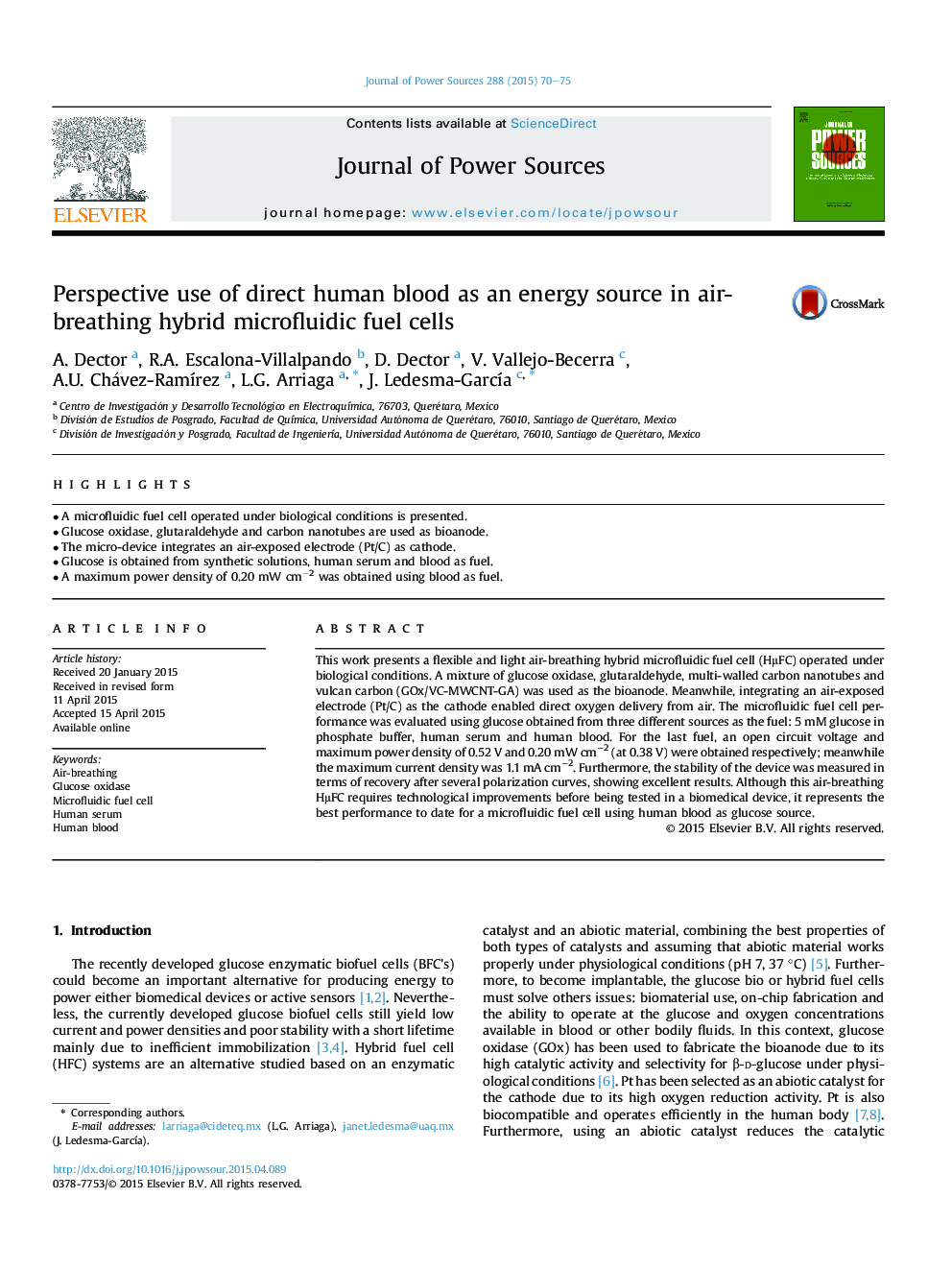| Article ID | Journal | Published Year | Pages | File Type |
|---|---|---|---|---|
| 7731801 | Journal of Power Sources | 2015 | 6 Pages |
Abstract
This work presents a flexible and light air-breathing hybrid microfluidic fuel cell (HμFC) operated under biological conditions. A mixture of glucose oxidase, glutaraldehyde, multi-walled carbon nanotubes and vulcan carbon (GOx/VC-MWCNT-GA) was used as the bioanode. Meanwhile, integrating an air-exposed electrode (Pt/C) as the cathode enabled direct oxygen delivery from air. The microfluidic fuel cell performance was evaluated using glucose obtained from three different sources as the fuel: 5 mM glucose in phosphate buffer, human serum and human blood. For the last fuel, an open circuit voltage and maximum power density of 0.52 V and 0.20 mW cmâ2 (at 0.38 V) were obtained respectively; meanwhile the maximum current density was 1.1 mA cmâ2. Furthermore, the stability of the device was measured in terms of recovery after several polarization curves, showing excellent results. Although this air-breathing HμFC requires technological improvements before being tested in a biomedical device, it represents the best performance to date for a microfluidic fuel cell using human blood as glucose source.
Related Topics
Physical Sciences and Engineering
Chemistry
Electrochemistry
Authors
A. Dector, R.A. Escalona-Villalpando, D. Dector, V. Vallejo-Becerra, A.U. Chávez-RamÃrez, L.G. Arriaga, J. Ledesma-GarcÃa,
